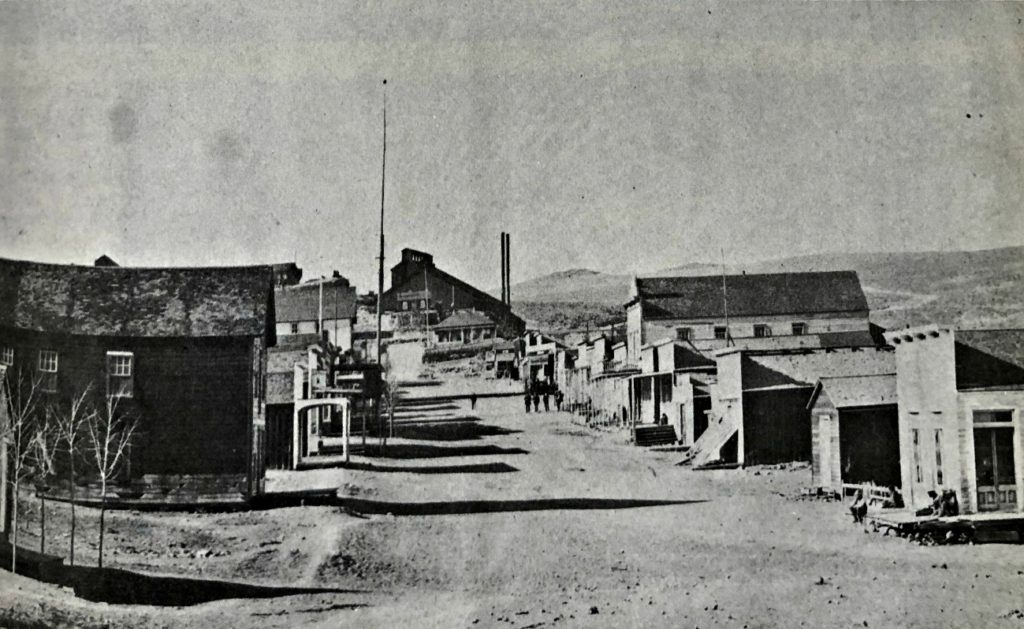Exploring the Enchanting Ghost Towns of Nevada
Nevada is a state known for its rich history, vast desert landscapes, and a sense of mystery that lingers in the air. Beyond the glitz and glamour of Las Vegas, lie the remnants of a bygone era – the ghost towns of Nevada. These abandoned towns, once bustling with activity, now stand as a testament to the transient nature of life and the ebb and flow of fortune. With over 600 ghost towns scattered throughout the state, Nevada holds the title for having the most ghost towns in the United States. In this article, we will embark on a journey to explore some of the most captivating and haunting ghost towns that Nevada has to offer.
A Glimpse into Nevada’s Past
During the 19th century, Nevada experienced a population boom fueled by the mineral rush out West. Prospectors from all corners of the country flocked to Nevada in search of silver and gold, giving the state its nickname, the “Silver State.” As the mining industry thrived, numerous towns sprung up across the desert landscape. However, as the mineral deposits dwindled, the towns lost their luster and were eventually abandoned, leaving behind a trail of forgotten history.
Rhyolite: A Spectacle of Decay

Located just a short drive from Las Vegas and Death Valley National Park, Rhyolite stands as one of the most well-known and photographed ghost towns in Nevada. Once a prosperous mining town, Rhyolite boasted a population of over 10,000 residents during its peak in the early 1900s. The town was a testament to the wealth and opulence that came with the gold rush. It had luxury hotels, a stock exchange, an opera house, and even street lights – a rarity in those times.
However, the town’s fortune took a turn for the worse when a financial crisis swept the nation in 1907. The once-thriving town quickly succumbed to economic hardships, and its population dwindled. Today, visitors can explore the remnants of Rhyolite’s glorious past, including the old bank, jail, and train station. The town is also home to unique attractions such as a house made entirely of glass bottles and the Goldwell Open Air Museum, an outdoor art installation that adds an eerie and surreal touch to the ghostly atmosphere.
Belmont: Where History Meets Rowdiness

Nestled in a picturesque setting, Belmont is a ghost town that exudes both charm and a dark past. Founded in the late 1800s, Belmont was once a thriving silver mining town, attracting prospectors from near and far. The town boasted schools, churches, and even held the prestigious title of county seat from 1867 to 1905. However, Belmont was not without its vices. Saloons, gambling, and a red light district added a touch of rowdiness to the town’s character.
Today, visitors can explore the remains of Belmont’s glory days, including the two-story red-brick courthouse and the infamous Dirty Dick’s Belmont Saloon, which recreates the atmosphere of an old Western bar. Belmont serves as a window into a time when silver mines fueled the dreams and desires of those seeking fortune in the Wild West.
Gold Point: A Story of Resilience

Gold Point is a ghost town with a unique tale of resilience. Originally known as Lime Point, the town later adopted the name Hornsilver when it became a mining camp in 1908. More than 200 buildings, including hotels, cafes, and saloons, emerged as the town flourished. However, the mining operations came to a halt during World War II due to a government order that prohibited non-essential businesses.
Gold Point’s fate seemed sealed, but it found a new lease on life when Walt Kremin, a Las Vegas local, purchased the buildings in the late 1970s after winning a jackpot in a Vegas slot machine. Today, Gold Point stands as one of the most well-preserved and renovated ghost towns in Nevada. Visitors can experience the town’s rich history by staying in one of the original miner’s cabins, grabbing a drink at the saloon, or sending a postcard from the old post office.
Blair: A Lonely Ruin with Breathtaking Views

Perched atop a high elevation, Blair is a ghost town that offers more than just a glimpse into the past. Its ruins overlook the stunning desert landscapes of Clayton Valley, offering a peaceful and remote setting. The remains of Blair are pale and colorless, stark against the desert rocks, giving the town an air of loneliness.
Blair was once a bustling mining town from 1906 to 1915, extracting valuable resources from the earth. Today, visitors can explore the scattered structures and remnants of what was once the largest mill in Nevada. The contrast between the pale concrete ruins and the vibrant desert scenery makes Blair a hauntingly beautiful destination for those seeking solitude and a connection to the past.
Nelson: Where Reality Meets the Silver Screen
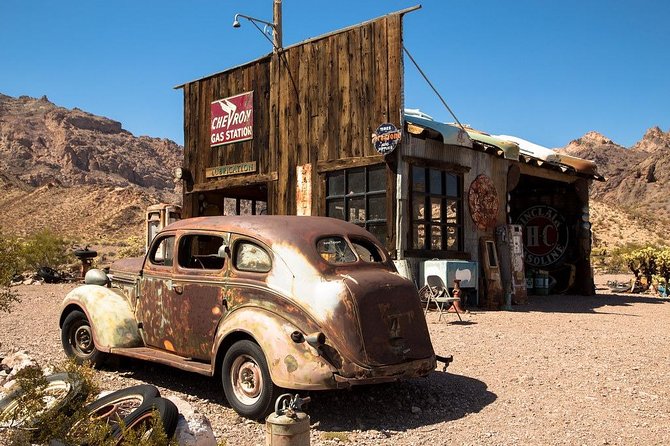
Nelson, a ghost town that feels like a movie set, has served as the backdrop for numerous films and photoshoots. Its unique charm and well-preserved buildings make it a popular destination for those seeking a glimpse into Nevada’s past. Nelson’s history dates back to the 1860s when it became a prominent gold-producing town. However, the prosperity came at a cost, as Nelson gained a reputation for lawlessness, violence, and murders.
Today, visitors can explore the original buildings, including a vintage Texaco gas station, a sheet-metal garage, and a water tower. Nelson also offers mine tours, allowing visitors to delve deeper into the town’s rich mining history. The remnants of the past blend seamlessly with the surreal landscapes, creating a captivating experience for those who venture off the beaten path.
St. Thomas: A Hidden Gem Unveiled by Nature

St. Thomas, a Mormon settlement dating back to 1865, remained submerged beneath the waters of Lake Mead for decades. When the lake’s water levels receded due to climate change, the town was exposed once again, revealing a hidden gem in the Nevada desert. Visitors can now hike through the washed-out ruins and explore the remnants of a bygone era.
The town’s history is intertwined with the construction of the Hoover Dam, which created Lake Mead. St. Thomas served as a stop along the Arrowhead Trail, a route connecting Salt Lake City and Los Angeles. The exposed ruins offer a fascinating insight into the lives of the early settlers and the challenges they faced in this remote desert landscape.
Manhattan: A Sister Town to Belmont
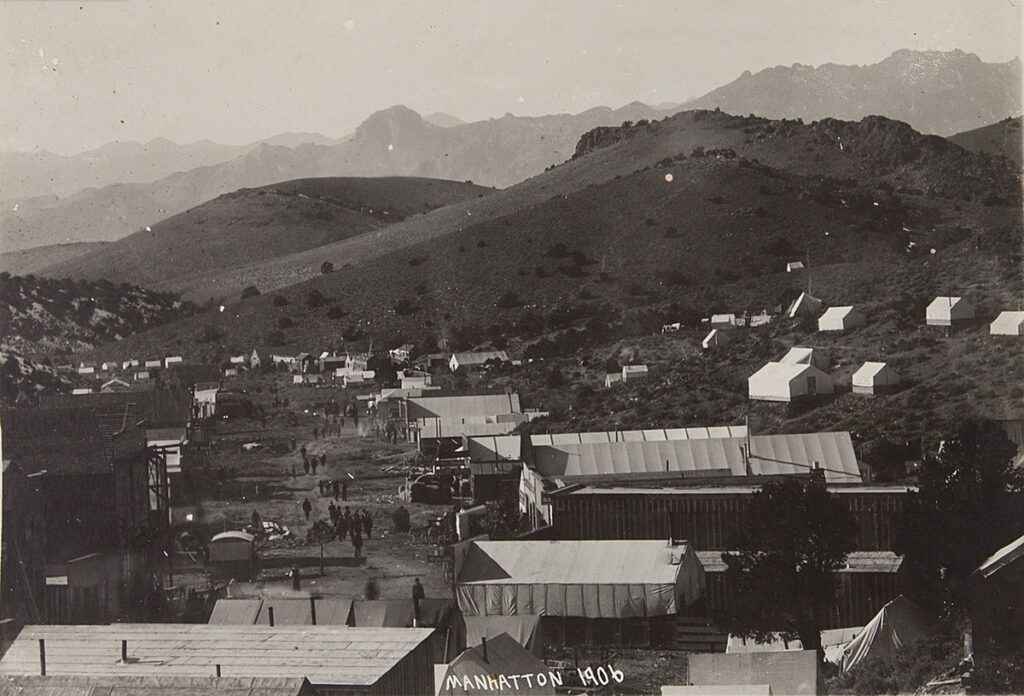
Manhattan, a sister town to Belmont, experienced a boom in the early 1900s as Belmont’s mining industry declined. The town had a bustling business district, complete with the Merchant Hotel and muddy streets notorious for their challenging conditions. Fires ravaged much of Manhattan in the 1920s, but some buildings survived, allowing visitors to catch a glimpse of the town’s past.
One notable survivor is the iron vault inside the remains of an old bank, the only stone building in town. Another intriguing piece of Manhattan’s history is the church, which was either transported intact or stolen from Belmont, depending on who you ask. Manhattan offers a fascinating contrast to its sister town and provides a deeper understanding of the challenges faced by these mining communities.
Berlin: Where History and Paleontology Meet
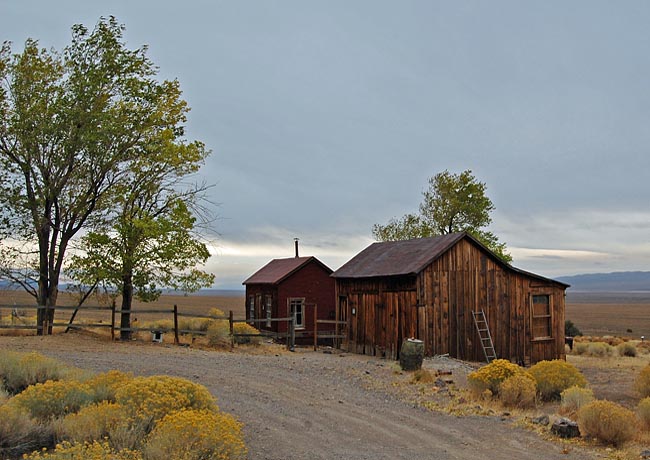
Berlin is not only a ghost town but also a gateway to the prehistoric past. The town is part of the Berlin-Ichthyosaur State Park, which is home to the largest known concentration of Ichthyosaur bones, remnants of an ancient ocean that once covered Nevada over 200 million years ago. Visitors can explore nearly 50 sites and structures, including a stabilized mill, mining offices, and a blacksmith shop.
Berlin’s history dates back to 1897 when it was founded as a small mining camp. Despite its short existence of less than 20 years, the town made its mark in the mining industry. Today, the state park provides a unique opportunity to witness both the town’s history and the fascinating world of paleontology.
Delamar: The Widowmaker
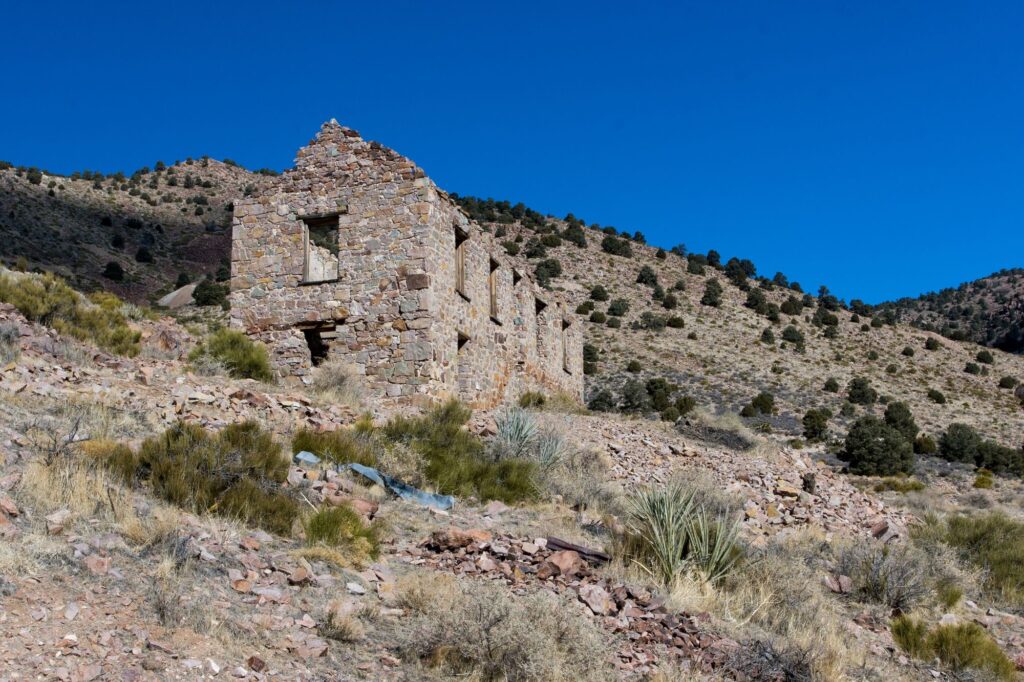
Delamar earned its haunting nickname, the Widowmaker, due to the dangerous conditions miners faced in the early 1900s. The town’s mining operations were highly successful, producing over half of Nevada’s ore output at one point. However, the excavation of quartzite rock created a fine dust that, when inhaled, led to widespread silicosis among the miners and mill workers. The disease claimed many lives, leaving behind numerous widows in a town that once thrived with a population of 3,000.
Despite a devastating fire in 1900, Delamar’s stone-mason architecture ensured that much of the town’s remains still stand. Visitors can explore the ruins, including the iron vault inside an old bank, and reflect on the sacrifices made by those who sought their fortunes in the treacherous mines.
Unionville: A Bed and Breakfast in a Ghost Town

Unionville offers a unique opportunity for visitors to spend the night in a ghost town. The Old Pioneer Garden Country Inn, a five-room bed and breakfast, was built in 1861 on the site of a blacksmith shop. Mark Twain himself dined at the inn during his short-lived residency in Unionville. The town, once a bustling stagecoach stop in the 1860s, attracted around 1,500 prospectors, including a significant number of Chinese immigrants.
Today, visitors can explore the town’s rich history, including Twain’s cabin, a church, and a schoolhouse. The remnants of Chinese coins and marbles serve as reminders of the town’s diverse past. Unionville stands as a testament to the transient nature of life in the Old West and offers a truly unique experience for those seeking a glimpse into Nevada’s history.
PLAN A TRIP TO THE GHOST TOWNS OF NEVADA
Embrace the Ghostly Charms of Nevada
Nevada’s ghost towns are more than just abandoned buildings; they are windows into the past, showcasing the dreams, triumphs, and hardships of those who sought fortune in the Wild West. As you explore these enchanting ghost towns, be sure to immerse yourself in the rich history and captivating stories that unfold around every corner. From Rhyolite’s post-apocalyptic feel to Belmont’s rowdy past, each ghost town has its own unique charm and tales to tell. So, pack your sense of adventure and embrace the ghostly charms of Nevada as you venture into the depths of these forgotten towns.
